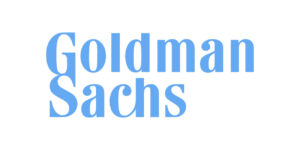Resume af teksten:
Den seneste inflationsdata i Storbritannien viser, at den er forbi sit toppunkt, men detaljer heri kan påvirke Bank of Englands politik. Fødevareprisinflationen er steget markant, hvilket kan styrke indflydelsen fra pengehøge, der bekymrer sig om vedvarende prisstigninger. Inflationen inden for servicesektor viste en mindre nedgang, men eksklusive ustabile elementer, noterede BoE’s foretrukne indikatorer en lille stigning. På trods af disse tryk forventes det stadig, at Bank of England vil sænke renten i december. Den britiske inflationsudvikling har alligevel skabt debat internt i banken, men guvernør Andrew Bailey, der har en tendens til at støtte duernes tilgang, ventes at favorisere en rentenedsættelse. Regeringens økonomiske politik og kommende budgetændringer ventes ikke at ændre denne forventning.
Fra ING:
UK inflation has peaked, but the latest data is a tad hawkish for the Bank of England. Food inflation was strong, which is red meat for the hawks. Services inflation rose, once volatile items are stripped out. However, we still expect the Bank to cut rates in December

UK headline inflation is undoubtedly past the peak, following a smaller household energy price hike than a year earlier. But the dip from 3.8% to 3.6% was shallower than expected, on account of a sharper pick-up in food inflation than we and others had pencilled in. Last month’s fall in food from 5.1% to 4.5% in annual terms looked a bit weird, and October’s rebound to 4.9% confirms that was indeed the case.
Fortunately, evidence from the eurozone – where fresh food inflation is falling – coupled with a levelling off in the newly-reinstated producer price data for food products, suggests inflation at the supermarkets is probably more or less at its peak. We suspect the risk to the Bank of England’s year-end food forecast of 5.3% is to the downside.
Food inflation picked up again in October

Source: Macrobond, ING
For now, however, the recent rebound is likely to keep concern alive among the Bank’s hawks about the potential impact on inflation expectations. They worry that this could fuel a more persistent bout of price pressure, akin to what we saw two or three years ago.
Elsewhere, services inflation notched lower from 4.7% to 4.5%, but this is principally down to air fares. Once you strip out the volatile and indexed elements, our calculation of the BoE’s preferred “core services” metric actually notched a tad higher in October. The hawks will point to restaurant/café prices, often seen as a bellwether for “persistence” among services categories, where prices increased sharply on the month, potentially linked to the broader food price pressure.
‘Core services’ inflation nudged slightly higher in October

Source: Macrobond, ING calculations
That said, taking a broader view, services is still generally heading in the right direction once you ignore the month-to-month volatility. Remember too that wage growth in the private sector is easing rapidly. We doubt there’s anything that will shake the conviction of the Bank’s doves, who argue immediate easing is necessary to offset potential weakness emanating from the jobs market.
The bottom line here is that there’s unlikely to be anything in this data that will change the minds of many voters on the BoE committee. That means the decision continues to hinge on Governor Andrew Bailey, who is somewhere between the two camps – though given he is more sympathetic to the view of the doves, we think he will still tip the balance in favour of a cut in December.
We doubt the forthcoming Autumn Budget will change that either. While gilt yields have risen following reports that the government has scrapped plans to increase income tax on account of a smaller fiscal hole, we are still probably looking at material tax hikes in 2026. At the margin, that helps build the case for a further loosening in monetary policy.
Hurtige nyheder er stadig i beta-fasen, og fejl kan derfor forekomme.



